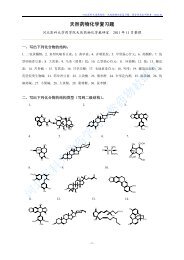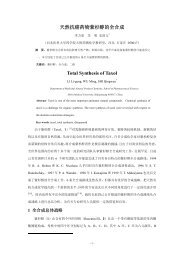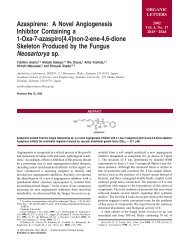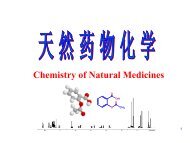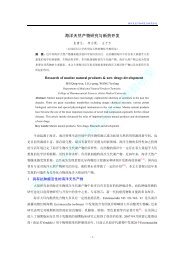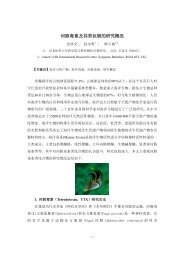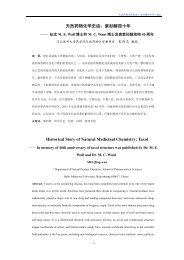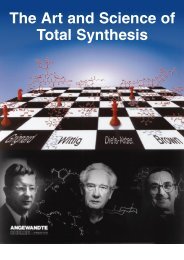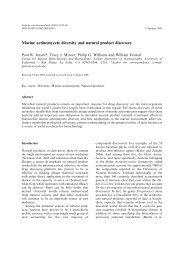Total Synthesis Highlights
Total Synthesis Highlights
Total Synthesis Highlights
You also want an ePaper? Increase the reach of your titles
YUMPU automatically turns print PDFs into web optimized ePapers that Google loves.
Several aspects of this synthesis are attractive. While the stereochemical outcome of the<br />
hydroboration of 14 could not necessarily be predicted with confidence, in fact it did not matter, as<br />
the stereogenic center adjacent to the ketone could be epimerized under the trifluoroacetic acid<br />
deprotection conditions, and only the desired diastereomer would be able to add in an<br />
intramolecular fashion to the cyclohexanone. The construction of 2 from 10 underscores the<br />
importance of the Au-catalyzed cyclizations developed by Professor Toste.<br />
The most important news from this synthesis is the validation in a second research group of the<br />
enantioselective Robinson annulation previously described by Professor Jørgensen. In the<br />
assembly of polycarbocycles, the central challenge is the enantioselective construction of the first<br />
ring. The Jørgensen annulation is a powerful solution to that problem.<br />
31. The Ley <strong>Synthesis</strong> of Rapamycin<br />
Rapamycin (3) is used clinically as an immunosuppressive agent. The synthesis of 3 (Angew.<br />
Chem. Int. Ed. 2007, 46, 591.) by Steven V. Ley of the University of Cambridge was based on the<br />
assembly and subsequent coupling of the iododiene 1 and the stannyl alkene 2.<br />
The lactone of 1 was prepared by Fe-mediated cyclocarbonylation of the alkenyl epoxide 5,<br />
following the protocol developed in the Ley group.<br />
The cyclohexane of 2 was constructed by SnCl 4 -mediated cyclization of the allyl stannane 9, again<br />
employing a procedure developed in the Ley group. Hydroboration delivered the aldehyde 11,<br />
which was crotylated with 12, following the H. C. Brown method. The alcohol so produced (not<br />
illustrated) was used to direct the diastereoselectivity of epoxidation, then removed, to give 13.<br />
Coupling with 14 then led to 2.



